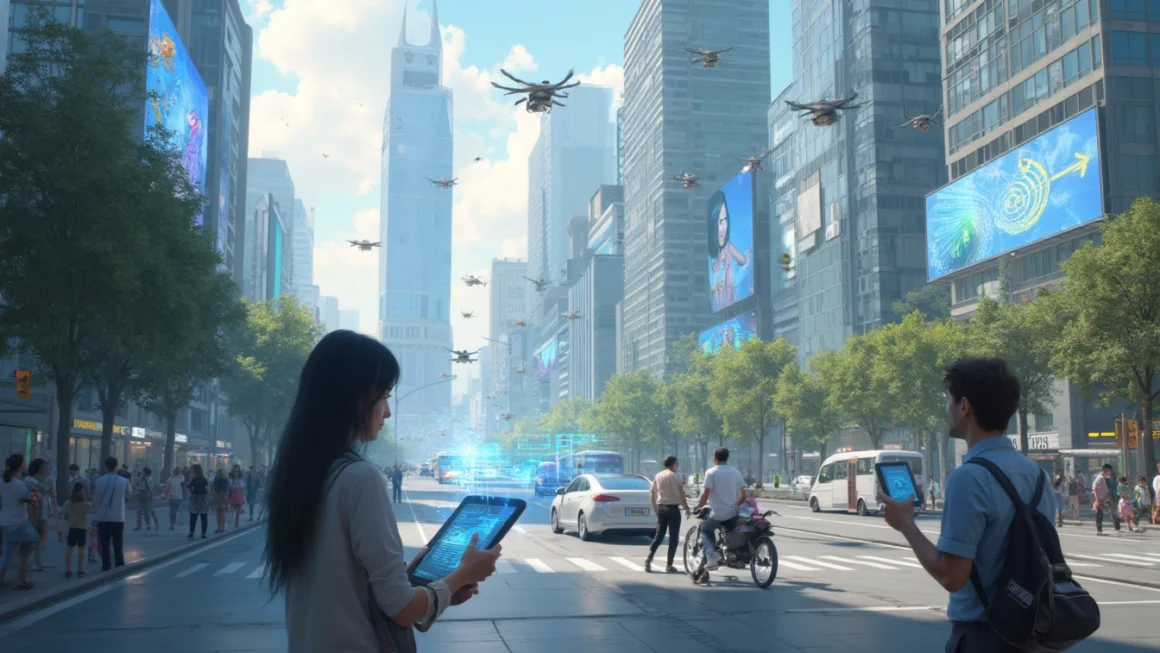Artificial Intelligence (AI) is rapidly transforming the landscape of work and employment. A recent report by the Stanford Institute for Economic Policy Research (SIEPR) delves into the potential impacts of AI on the future of work. This comprehensive analysis provides valuable insights into how AI might reshape job markets, skills requirements, and economic structures in the coming years.
The Impact of AI on Employment
Table of Contents
One of the primary concerns surrounding AI is its potential to displace human workers. The report acknowledges that while AI will undoubtedly lead to job losses in certain sectors, it will also create new opportunities in others. This dynamic shift in employment patterns is not unprecedented; similar transitions have occurred during previous technological revolutions.
However, the pace and scale of AI-driven changes may be unprecedented. Industries that rely heavily on routine cognitive tasks, such as data entry and basic analysis, are likely to see significant disruptions. On the other hand, jobs that require complex problem-solving, creativity, and emotional intelligence may see increased demand.
Skill Adaptation and Lifelong Learning
As AI continues to evolve, the importance of adaptable skills and continuous learning cannot be overstated. The report emphasizes the need for workers to develop skills that complement AI rather than compete with it. This includes:
- Critical thinking and complex problem-solving
- Creativity and innovation
- Emotional intelligence and interpersonal skills
- Technical literacy and AI understanding
Educational institutions and businesses will need to collaborate to create effective training programs that prepare workers for this AI-augmented future. Innovative platforms for skill development and automation will play a crucial role in facilitating this transition.
Economic Implications of AI Adoption
The report also explores the broader economic implications of widespread AI adoption. While AI has the potential to significantly boost productivity and economic growth, it may also exacerbate income inequality if the benefits are not distributed equitably.
Potential Benefits:
- Increased productivity across various sectors
- Creation of new industries and job categories
- Improved efficiency in resource allocation
Potential Challenges:
- Widening skill gaps and wage disparities
- Displacement of workers in certain industries
- Need for significant investment in retraining and education
Policy Considerations for an AI-Driven Future
The report underscores the importance of proactive policy measures to ensure that the benefits of AI are broadly shared. Some key policy areas highlighted include:
Education and Training:
Governments and educational institutions must prioritize AI literacy and skills development from early education through adult learning programs.
Labor Market Policies:
Policies that support worker retraining, job transition assistance, and potentially universal basic income should be considered to mitigate the disruptive effects of AI.
Ethical AI Development:
Ensuring that AI systems are developed and deployed ethically, with considerations for fairness, transparency, and accountability.
Research and Innovation:
Continued investment in AI research and development, with a focus on applications that complement human workers rather than replace them.
The Future of Human-AI Collaboration
Despite concerns about job displacement, the report paints a picture of a future where humans and AI systems work collaboratively. This symbiotic relationship has the potential to enhance human capabilities, leading to unprecedented levels of innovation and productivity.
Examples of human-AI collaboration include:
- AI-assisted medical diagnoses, with human doctors providing empathy and complex decision-making
- AI-powered design tools that augment human creativity in fields like architecture and product design
- AI analysis of large datasets, with human experts interpreting results and developing strategies
Conclusion: Preparing for an AI-Augmented Workforce
The SIEPR report on AI and the future of work provides a nuanced view of the challenges and opportunities that lie ahead. While AI will undoubtedly transform the job market, the key to success lies in proactive preparation and adaptation.
Individuals, businesses, and policymakers all have roles to play in shaping a future where AI enhances human potential rather than replaces it. By focusing on skill development, ethical AI deployment, and inclusive economic policies, we can work towards a future where the benefits of AI are broadly shared and contribute to societal progress.
As we stand on the brink of this AI revolution, it’s clear that the future of work will be characterized by continuous learning, adaptability, and human-AI collaboration. By embracing these changes and preparing accordingly, we can harness the full potential of AI to create a more productive, innovative, and equitable world of work.




